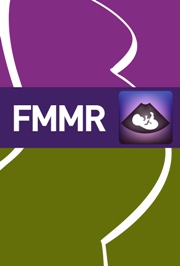Crossref Citations
This article has been cited by the following publications. This list is generated based on data provided by
Crossref.
Dammann, Olaf
and
Leviton, Alan
1997.
Maternal Intrauterine Infection, Cytokines, and Brain Damage in the Preterm Newborn.
Pediatric Research,
Vol. 42,
Issue. 1,
p.
1.
Mazor, Moshe
Chaim, Walter
Maymon, Eli
Hershkowitz, Reli
and
Romero, Roberto
1998.
The Role of Antibiotic Therapy in the Prevention of Prematurity.
Clinics in Perinatology,
Vol. 25,
Issue. 3,
p.
659.
Dammann, Olaf
and
Leviton, Alan
1998.
Infection remote from the brain, neonatal white matter damage, and cerebral palsy in the preterm infant.
Seminars in Pediatric Neurology,
Vol. 5,
Issue. 3,
p.
190.
Hatthachote, Panadda
Morgan, Joanna
Dunlop, William
Europe-Finner, G. Nicholas
and
Gillespie, James I.
1998.
Gestational Changes in the Levels of Transforming Growth Factor-β1 (TGFβ1) and TGFβ Receptor Types I and II in the Human Myometrium1.
The Journal of Clinical Endocrinology & Metabolism,
Vol. 83,
Issue. 8,
p.
2987.
Hatthachote, Panadda
and
Gillespie, James I.
1999.
Complex Interactions Between Sex Steroids and Cytokines in the Human Pregnant Myometrium: Evidence for an Autocrine Signaling System at Term*.
Endocrinology,
Vol. 140,
Issue. 6,
p.
2533.
Hansen, Anne
and
Leviton, Alan
1999.
Labor and delivery characteristics and risks of cranial ultrasonographic abnormalities among very-low-birth-weight infants.
American Journal of Obstetrics and Gynecology,
Vol. 181,
Issue. 4,
p.
997.
Leviton, Alan
Paneth, Nigel
Reuss, M Lynne
Susser, Mervyn
Allred, Elizabeth N
Dammann, Olaf
Kuban, Karl
van Marter, Linda J
Pagano, Marcello
Hegyi, Thomas
Hiatt, Mark
Sanocka, Ulana
Shahrivar, Farrokh
Abiri, Michael
Disalvo, Donald
Doubilet, Peter
Kairam, Ram
Kazam, Elias
Kirpekar, Madhuri
Rosenfeld, David
Schonfeld, Steven
Share, Jane
Collins, Margaret
Genest, David
Heller, Debra
and
Shen-Schwarz, Susan
1999.
Maternal Infection, Fetal Inflammatory Response, and Brain Damage in Very Low Birth Weight Infants.
Pediatric Research,
Vol. 46,
Issue. 5,
p.
566.
Dammann, Olaf
and
Leviton, Alan
2000.
Role of the fetus in perinatal infection and neonatal brain damage.
Current Opinion in Pediatrics,
Vol. 12,
Issue. 2,
p.
99.
O'Shea, T. Michael
and
Dammann, Olaf
2000.
ANTECEDENTS OF CEREBRAL PALSY IN VERY LOW–BIRTH WEIGHT INFANTS.
Clinics in Perinatology,
Vol. 27,
Issue. 2,
p.
285.
Saliba, Elie
and
Marret, Stéphane
2001.
Cerebral white matter damage in the preterm infant: pathophysiology and risk factors.
Seminars in Neonatology,
Vol. 6,
Issue. 2,
p.
121.
Holcberg, Gershon
Huleihel, Mahmoud
Sapir, Olga
Katz, Miriam
Tsadkin, Marina
Furman, Boris
Mazor, Moshe
and
Myatt, Leslie
2001.
Increased production of tumor necrosis factor-α TNF-α by IUGR human placentae.
European Journal of Obstetrics & Gynecology and Reproductive Biology,
Vol. 94,
Issue. 1,
p.
69.
Gibson, Catherine S.
MacLennan, Alastair H.
Goldwater, Paul N.
and
Dekker, Gustaaf A.
2003.
Antenatal Causes of Cerebral Palsy: Associations Between Inherited Thrombophilias, Viral and Bacterial Infection, and Inherited Susceptibility to Infection.
Obstetrical & Gynecological Survey,
Vol. 58,
Issue. 3,
p.
209.
GIBSON, CATHERINE S.
MACLENNAN, ALASTAIR H.
GOLDWATER, PAUL N.
and
DEKKER, GUSTAAF A.
2008.
THE ANTENATAL CAUSES OF CEREBRAL PALSY – GENETIC AND VIRAL ASSOCIATIONS.
Fetal and Maternal Medicine Review,
Vol. 19,
Issue. 3,
p.
181.
Pirie, Martina
Linden, Gerard
and
Irwin, Christopher
2013.
Intrapregnancy Non‐Surgical Periodontal Treatment and Pregnancy Outcome: A Randomized Controlled Trial.
Journal of Periodontology,
Vol. 84,
Issue. 10,
p.
1391.


